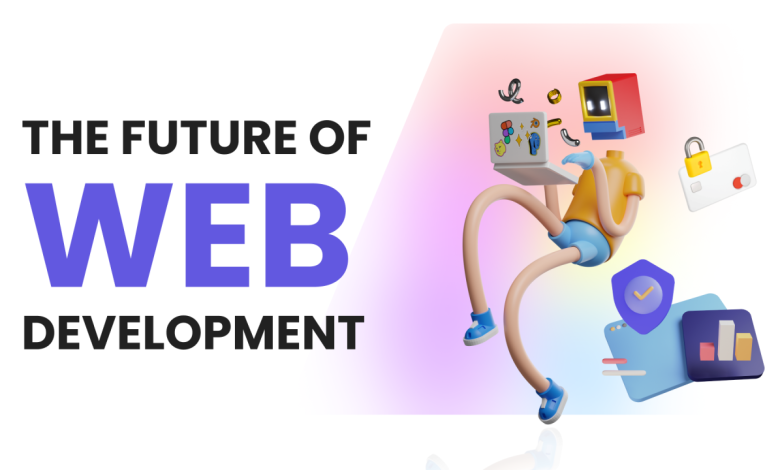The Future of Web Development: From SPAs to Generative AI

Web development has undergone significant transformation over the past two decades. From static HTML pages to dynamic web applications, the industry has seen continuous innovation. Today, single-page applications (SPAs) dominate much of the web, offering seamless user experiences. But as generative AI begins to reshape technology, the future of web development promises even greater change. This article explores the evolution from SPAs to AI-driven web applications, the benefits and challenges, and what skills developers will need to thrive in this new era.
1. The Era of Single-Page Applications (SPAs)
SPAs revolutionized the web by providing app-like experiences within browsers. Frameworks such as React, Angular, and Vue allowed developers to:
- Reduce page reloads for smoother navigation.
- Deliver highly interactive user interfaces.
- Improve performance through client-side rendering.
SPAs set the foundation for the modern web by prioritizing speed and user experience.
2. The Limitations of SPAs
Despite their popularity, SPAs face several challenges:
- SEO Limitations: Client-side rendering can hinder search engine optimization.
- Performance Issues: Large JavaScript bundles slow down initial load times.
- Complexity: Managing state, routing, and data synchronization can become difficult.
- Accessibility Concerns: SPAs often require additional effort to meet accessibility standards.
These limitations opened the door for new architectures and solutions.
3. The Rise of Server-Side Rendering (SSR) and Jamstack
To address SPA limitations, developers adopted SSR and Jamstack approaches:
- SSR (Next.js, Nuxt.js): Combines dynamic features with better SEO and performance.
- Jamstack: Leverages static site generation, APIs, and client-side JavaScript for scalable and secure applications.
These architectures bridged the gap between performance, SEO, and modern interactivity.
4. AI Enters Web Development
Generative AI is the next major disruptor in web development. It introduces capabilities such as:
- AI-Powered Code Generation: Creating boilerplate code from natural language prompts.
- Content Creation: Auto-generating text, images, and multimedia.
- Personalization: Delivering unique user experiences based on behavior and preferences.
- Chatbots and Virtual Assistants: Seamlessly integrating conversational AI into websites.
5. The Future of AI-Driven Web Applications
AI will redefine how web applications are built and experienced:
- Dynamic Personalization: Websites that adapt content in real time for each user.
- Generative Design: AI-driven UI/UX creation based on user context.
- Natural Language Interfaces: Websites where users interact using voice or text commands.
- Predictive Experiences: Applications anticipating user needs before actions are taken.
This evolution will make web apps smarter, more intuitive, and more human-centered.
6. Challenges of AI in Web Development
While promising, AI brings new challenges:
- Ethical Concerns: Bias in AI-generated content.
- Security Risks: Protecting user data in personalized applications.
- Performance Demands: Running AI models in real-time requires significant resources.
- Dependency on Third-Party APIs: Many AI tools rely on external services, raising concerns about control and cost.
7. Skills Developers Need for the Future
To stay ahead, web developers should focus on:
- Mastering modern frameworks (Next.js, Remix, SvelteKit).
- Learning how to integrate and fine-tune AI models.
- Understanding ethical AI practices.
- Strengthening knowledge in cybersecurity and data privacy.
- Adapting to cross-disciplinary roles involving design, AI, and business.
8. Beyond the Browser: Web in the Age of XR and Metaverse
The web of the future won’t be limited to browsers:
- WebXR: Enabling immersive VR/AR experiences directly in the browser.
- Metaverse Platforms: Creating 3D interactive spaces accessible via the web.
- Cross-Platform Interoperability: Seamless integration across devices and ecosystems.
Developers will play a key role in shaping these immersive digital environments.
Conclusion
The future of web development will move beyond SPAs toward AI-driven, immersive, and personalized experiences. Generative AI will act as both a tool for developers and a driver of user-centric innovation. While challenges exist, the opportunities are vast. Developers who embrace AI, immersive technologies, and new architectures will be at the forefront of building the next generation of the web.
The web is evolving from static pages to intelligent, adaptive experiences—the future is not just interactive, it’s generative.

